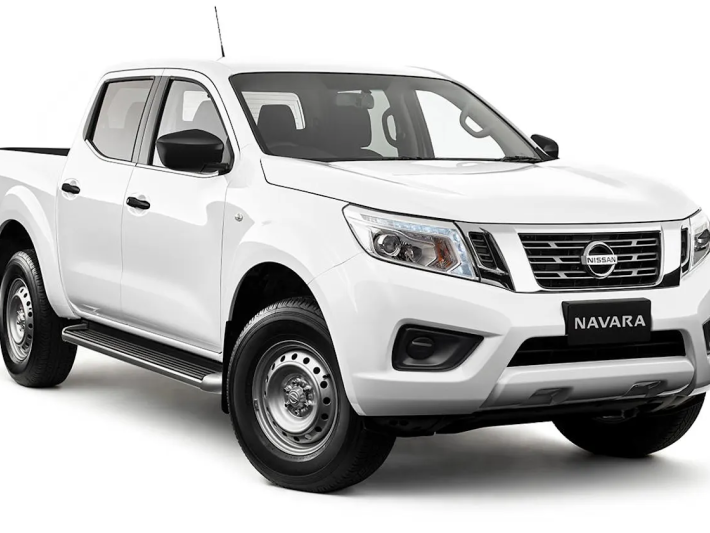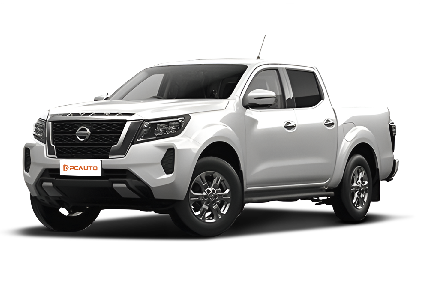Q
Does your 2021 Nissan Rogue have anti-lock brakes?
Yes, the 2021 Nissan Rogue (known as the X-Trail in Malaysia) does come standard with Anti-lock Braking System (ABS), a key safety feature designed to prevent wheel lock-up during hard braking. It helps drivers maintain control of the vehicle and can shorten stopping distances by using sensors to monitor wheel speed. When it detects a wheel is about to lock, it automatically adjusts braking force—this works especially well on slippery roads. Beyond ABS, the 2021 Rogue likely includes Electronic Brakeforce Distribution (EBD) and Brake Assist (BA) to further enhance braking performance. For Malaysian drivers, these features are super important during the rainy season or on rough roads, really boosting driving safety. Just keep in mind, while ABS aids braking, you still need to maintain a safe following distance and stay focused. The actual stopping distance still depends on road conditions, tire health, and how fast you’re going.
Special Disclaimer: This content is published by users and does not represent the views or position of PCauto.
Related Q&A
Q
How to open a 2021 Nissan car without a key?
If you've lost or damaged the key fob for your 2021 Nissan, your first move should be to reach out to an authorized Nissan dealer or a professional locksmith. Modern cars come with electronic anti-theft systems, so trying to force the locks or messing with it yourself could wreck the vehicle or set off the security alarm. For models with the smart key system, you might be able to unlock it remotely using Nissan's official app, like NissanConnect, but only if you've registered and activated the service beforehand. In Malaysia, some third-party auto service companies offer professional key programming, but make sure to choose a reputable provider to ensure security. It's worth noting that most 2021 Nissan models use encrypted transmission technology, so traditional mechanical lock-picking might not work, and trying to take apart the door yourself could void your warranty. As a daily habit, keep your spare key somewhere safe or think about installing a GPS tracking system just in case. If your key does go missing, heading to the dealer to get a new one programmed and deactivating the old key's code is the safest fix.
Q
How do you start a 2021 Nissan with a dead key fob?
If your 2021 Nissan key fob is dead, you can still start the vehicle using these steps: First, locate the mechanical key inside the fob—it's usually hidden near the keyring. Press the release button to pull it out. Next, insert the mechanical key into the driver's door lock (on some models, the lock might be hidden under a small cover on the door handle that you'll need to gently pry off). Once you're inside, hold the dead key fob close to the start button (typically on the right side of the steering wheel or near the center console), then press the brake pedal and hit the start button to fire up the engine.
It's worth noting that the key detection area can vary by Nissan model—some have it below the start button, others in the center armrest storage bin—so checking your owner's manual for the exact spot is a good idea. To avoid this hassle, Malaysian owners should regularly check their key fob battery (usually a CR2032 coin cell). If you notice the remote range getting shorter or the indicator light dimming, replace the battery ASAP. Keeping a spare battery in the car is also a smart move.
While modern smart key systems are super convenient, that traditional mechanical key is still a crucial backup. Make sure you're familiar with how to use it—you never know when you might need it.
Q
How long will a 2021 Rogue last?
Under normal usage conditions in Malaysia, the 2021 Nissan Rogue can typically clock around 250,000 to 300,000 kilometers or last over 15 years with regular servicing and maintenance. Of course, the actual lifespan depends on factors like driving habits, road conditions, and how often you keep up with maintenance. It’s got a solid 2.5-liter four-cylinder engine and that Xtronic CVT transmission, with an overall mechanical setup that’s been refined for better durability. To make it last longer, Malaysian owners should pay extra attention to how the tropical climate affects the car – like checking the cooling and air-con systems every 6 months, using engine oil suited for high temperatures, and regularly cleaning the radiator to prevent overheating. Also, with Malaysia’s frequent rain and humidity, rustproofing the undercarriage and body is a must. As a globally popular SUV, Rogue has pretty good parts availability, which is a big plus for long-term ownership. It’s worth noting that any car’s lifespan hinges on sticking to the manufacturer’s recommended maintenance schedule – think timely transmission fluid changes and regular brake checks. For Malaysians looking at a used Rogue, focus on inspecting the CVT transmission’s performance and the condition of the undercarriage; these are key to how much life the vehicle has left.
Q
Can I remote start my 2021 Nissan Rogue?
The 2021 Nissan Rogue offers remote start functionality on some trims, depending on whether your vehicle is equipped with NissanConnect services and the corresponding smart key system. If you opted for the version with remote start when purchasing, you can fire up the car using a button combination on the factory key fob—usually pressing the lock button first, then holding down the remote start button—or through the NissanConnect mobile app. This is super handy in Malaysia's hot weather, letting you kick on the AC early to cool things down. Just keep in mind that remote start typically has a time limit (around 10-15 minutes), and the vehicle stays locked for security. For owners without the factory setup, you might consider adding an aftermarket remote start system to get similar features, but it's best to go with a professional shop to avoid messing with the original wiring or voiding your warranty. Different brands of remote start systems can have slightly different operation methods—like some requiring double-pressing the lock button before the start button—so it's a good idea to check your owner's manual for the exact steps. Also, when using the mobile app for remote start, make sure the vehicle is in an area with good network coverage, and this feature usually requires a subscription to keep using it.
Q
Why is my 2021 Nissan Rogue not blowing cold air?
Your 2021 Nissan Rogue's air conditioning not cooling could be due to several common issues. First, check if the refrigerant is low – that's the most common problem with AC systems. A refrigerant leak or lack of regular replenishment will reduce cooling performance, so it's best to have a professional shop run a pressure test and top it up. Next, it might be a faulty AC compressor. The compressor is the heart of the cooling system; if you hear strange noises or it won't start at all, you'll need to get it repaired or replaced ASAP. Additionally, a clogged condenser or a malfunctioning cooling fan can also affect cooling, especially in Malaysia's hot weather where these problems tend to get worse faster. Regularly cleaning the condenser and checking the fan's electrical connections can help prevent this. Finally, don't rule out a dirty cabin air filter restricting airflow. It's a good idea to replace the filter every 10,000 to 20,000 kilometers to keep air moving freely. For newer models like the 2021 Rogue, electronic control system failures are less likely, but if all the above checks come up empty, you might need a diagnostic scanner to read error codes for further troubleshooting. In daily use, try to avoid turning on the AC immediately after the car has been sitting in the sun for a long time. Open the windows first to let the hot air out, then gradually lower the temperature – this reduces strain on the AC system and helps it last longer.
Q
What issues does the 2021 Nissan Rogue have?
The main issues with the 2021 Nissan Rogue in the Malaysian market center around technical details like transmission jerkiness, occasional lag in the infotainment system, and some owners reporting overly sensitive brake pedals. These problems are more common in early production batches and can usually be fixed with a software update or dealer inspection. The Rogue's ProPILOT semi-autonomous driving assist system may require the driver to take over more frequently in complex road conditions, a technical trait common among SUVs in this class. It's worth noting that the Rogue's 2.5L naturally aspirated engine shows good cooling stability in tropical climates, and its 271mm ground clearance works really well for Malaysia's rainy road conditions. Potential owners should check Nissan Malaysia's official website for the latest Service Campaigns and prioritize purchasing the factory extended warranty—these preventive steps go a long way in ensuring the long-term reliability of electronic components. Compared to its peers, the Rogue's rear Magic Seat design offers a unique advantage when hauling large items, a practical feature Malaysian users who often need to transport family goods should pay attention to.
Q
Why is my Nissan Rogue 2021 not starting?
Your 2021 Nissan Rogue failing to start can stem from several common issues. First, check the battery condition—Malaysia's hot and humid climate tends to speed up battery terminal corrosion or drain power. Use a multimeter to test the voltage (should read above 12.4V); if lower, try jump-starting or replacing the battery. Next, look at the smart key system: low key battery (typically CR2032) or nearby electromagnetic interference can disable keyless start—try physically touching the key to the start button. For the fuel system, consistent use of low-octane gasoline might clog injectors, so regular use of genuine fuel additives is recommended. Also inspect the fuse box (especially 15-20A fuses related to the ignition system) and ensure the transmission is fully in Park. Notably, modern vehicles' smart diagnostic systems will display specific warning lights on the dashboard—a yellow engine-shaped light may indicate electronic throttle issues, while a red battery light points to charging system problems. It’s advisable to connect an OBD-II scanner to read error codes promptly. For models with auto-start-stop, frequent short trips can drain the auxiliary battery—temporarily disabling this feature and attempting to start might work. If these basic checks don’t resolve the issue, contact an authorized service center to inspect critical components like the starter motor, fuel pump, or crankshaft position sensor, which can develop intermittent faults in high-temperature environments.
Q
Why is my 2021 Nissan Rogue stuck in park?
There are a few common reasons why your 2021 Nissan Rogue might be stuck in Park (P). First off, the brake light switch could be faulty. Modern cars have a safety feature that requires you to press the brake pedal to shift out of Park, so if this switch is broken, the signal won't reach the transmission control module. Second, the shift lock mechanism might be jammed or have an electrical issue – this tends to happen more often in Malaysia's humid climate. You can try gently wiggling the steering wheel while pressing the brake to release the lock. Additionally, a temporary glitch in the transmission position sensor or the Engine Control Unit (ECU) could also cause this problem. I recommend disconnecting the negative battery terminal for 5 minutes to reset the car's computer. If the issue persists, you'll need a professional diagnostic tool to read the trouble codes. It's worth noting that Malaysia's hot and rainy weather can accelerate the oxidation of electrical contacts, so regularly checking the condition of electrical connections can help prevent these kinds of problems. For models with an electronic gear shifter, also be careful to avoid spilling liquids on the control panel. If these simple checks don't work, contact an authorized service center promptly. They can quickly pinpoint the issue using the CONSULT diagnostic system, and let's face it, transmission-related repairs are safety-critical and require specialized expertise.
Q
Why is the check engine light on in my Nissan Rogue 2021?
There are several possible reasons why the check engine light is on in your 2021 Nissan Rogue. The most common issues are related to the emissions system, such as a loose gas cap, a faulty oxygen sensor, or a declining catalytic converter efficiency. It could also be due to worn spark plugs, a dirty mass airflow sensor, or carbon buildup on the throttle body causing incomplete combustion. We recommend first checking if the gas cap is fully sealed since that's the easiest fix. If the light stays on, you'll need an OBD-II scanner to read the trouble codes and pinpoint the exact problem. Given Malaysia's hot and humid climate, it's a good idea to regularly check the battery condition and sensor wiring, as high temperatures and humidity can speed up the aging of electronic components. If you just filled up with low-quality fuel at the station, that might also trigger the light. In that case, try refueling with good quality gasoline that meets RON95 or RON97 standards and drive for a while to see if it helps. It's important to note that modern vehicles have very sensitive ECU systems, and even minor issues will trigger the check engine light to alert you to get it checked promptly, preventing small problems from turning into major ones. If the light is flashing continuously, you need to stop and get it inspected immediately—this usually indicates a serious misfire that could damage the catalytic converter.
Q
How do you release the parking brake on a 2021 Nissan Rogue?
Releasing the electronic parking brake on the 2021 Nissan Rogue (X-Trail) is super straightforward. When the vehicle is started and in Park, just tap the brake pedal and press the electronic parking brake switch near the center console (the button with the "P" symbol) to disengage it, and the instrument cluster will show a release indicator. For Malaysian owners, when starting on a slope, it's a good idea to use the Auto Hold function or a quick tap of the throttle to automatically release the brake—that way you avoid the risk of rolling back. It's worth mentioning that electronic parking brakes save more space and are easier to use than traditional hand levers, but you should check the system's responsiveness regularly. If you see any warning lights pop up, head to an authorized Nissan service center for a check-up right away. In daily use, Malaysia's rainy weather can increase moisture in the brake system, so replacing the brake fluid every 2 years is recommended to keep the electronic parking brake performing at its best. If you're leaving the vehicle parked for a long time, consider using wheel chocks for extra security and to take some strain off the parking brake system.
Latest Q&A
Q
How much horsepower does a 2020 Triton have?
The 2020 Triton packs 110 horsepower. It's powered by a 2.5-liter (2477cc) diesel engine. This engine cranks out maximum power at 4000 rpm and peak torque at 2000 rpm. It delivers plenty of oomph for daily driving and all sorts of tasks, letting the truck handle different road conditions and payload demands with ease. There might be some performance variations across different trims, but overall, they all offer a reliable and practical driving experience.
Q
What is the fuel consumption of a Mitsubishi Triton 2020?
The fuel economy of the 2020 Mitsubishi Triton varies depending on the specific trim and driving conditions. Official figures show that the version equipped with the 2.4-liter MIVEC turbocharged diesel engine (model 4N15) has a combined fuel consumption of approximately 8.6 liters per 100 kilometers. Manual transmission models might be slightly lower at 8.2 liters per 100 kilometers, while automatic variants tend to be a bit higher due to transmission tuning. In real-world driving, if you frequently carry heavy loads or go off-roading, fuel consumption could rise to 10-12 liters per 100 kilometers. This engine features common rail injection technology and a variable geometry turbocharger, balancing low-end torque with high-rev efficiency. The accompanying Super Select 4WD-II system maintains decent fuel economy even in 4H mode. It's important to note that diesel vehicle fuel consumption is significantly affected by fuel quality; using B7 or higher-grade diesel is recommended to achieve optimal performance. Additionally, regular maintenance of the fuel filter and injectors is crucial for keeping fuel consumption in check. Rivals in the same pickup segment like the Toyota Hilux and Ford Ranger have similar fuel economy figures, but the Triton's lightweight chassis design gives it a slight edge when unladen. Adding a bed cover or reducing highway cruising RPM can further optimize fuel efficiency.
Q
How much does a 2020 Mitsubishi cost?
The specific price of a 2020 Mitsubishi model depends on the vehicle type and configuration. For example, a used Mitsubishi Triton pickup truck costs around 80,000 to 120,000 Malaysian Ringgit, while the ASX compact SUV ranges from 70,000 to 100,000 Malaysian Ringgit. Actual prices are affected by condition, mileage, and additional features. Mitsubishi vehicles are known for durability and practicality. The Triton, for instance, suits users needing strong power and off-road capability, while the ASX is better for city driving with good fuel efficiency. When buying a used car, it's advisable to check maintenance records and vehicle history to ensure no major accidents. Additionally, Mitsubishi has an extensive after-sales network, sufficient parts supply, and relatively reasonable maintenance costs—all factors worth considering.
Q
How much is a Mitsubishi Triton 2020?
The 2020 Mitsubishi Triton Quest is priced at RM 81,390. This model runs on diesel fuel and is powered by a 2.5-liter engine with a maximum output of 110 horsepower. It comes with a 5-year or 100,000-kilometer warranty. The spacious interior and large 75-liter fuel tank make it suitable for various needs. Its 4x4 drive system and manual transmission provide decent control over different terrains. The vehicle is also equipped with standard safety features like ABS and multiple airbags to ensure driving safety.
Q
What is the fuel consumption of the Harrier 2018?
The fuel economy of the 2018 Harrier varies depending on the drivetrain and powertrain configuration. The 2.0L naturally aspirated front-wheel drive version has a combined fuel consumption of approximately 6.8L/100km, while the 2.0L turbocharged all-wheel drive version is slightly higher at around 7.3L/100km. Actual fuel consumption can be affected by driving habits, road conditions, and maintenance status. This vehicle features optimized engine technology and a lightweight body design, which help improve fuel efficiency, and it also comes with an ECO driving mode to further reduce fuel consumption. In daily driving, maintaining smooth acceleration, using cruise control properly, and regularly replacing the air filter can all improve fuel efficiency. It's worth noting that hybrid models are generally more fuel-efficient than traditional gasoline-powered vehicles. If energy conservation is a priority, the hybrid version may be a better choice, but it's necessary to balance the purchase cost with long-term fuel savings.
View MoreRelated News

It used to be as powerful as Hilux, but now it has to avoid competing with Hilux.
Kevin WongNov 18, 2025

2025 Nissan Navara X-Tremer launched in Malaysia, exterior enhanced with off-road design
RobertSep 1, 2025

Nissan Navara : Stylish Design Meets Utility
JamesMay 13, 2025

In Malaysia, which sliding door MPVs are available?
MichaelOct 30, 2025

Nissan plans to open the Rogue hybrid platform to competitors like Ford to ease financial pressure
Kevin WongOct 11, 2025
View More


















Pros
Cons